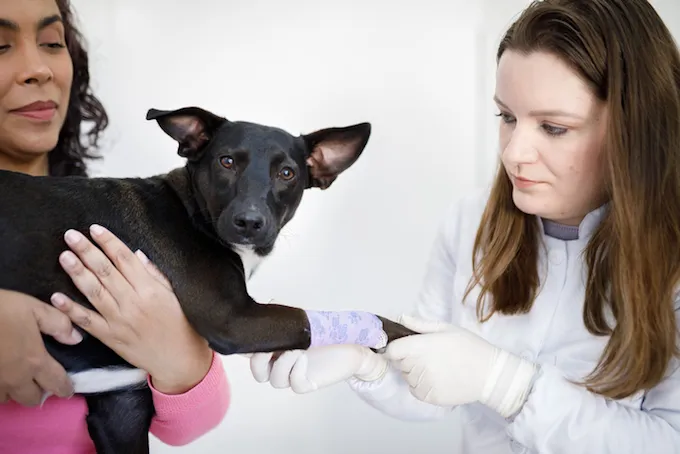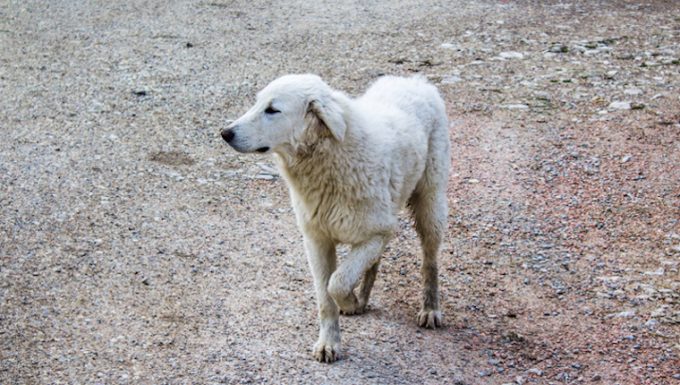Brachial plexus avulsion in dogs happens when a front leg gets injured. Limping is usually the first sign of a dog suffering from the condition.
Frequently, the condition is caused by a dog jumping and landing badly. Additionally, being in a traffic accident is a common cause.
The condition is different from antebrachial growth deformities, even though it can produce similar symptoms.
If you see the signs of brachial plexus avulsion in your dog, then get to a veterinarian for a proper diagnosis and treatment.
Here’s what you should know about the symptoms, causes, and treatments for the condition.
Symptoms of Brachial Plexus Avulsion in Dogs
The condition produces a small range of symptoms. For example, some of the most common symptoms include:
- Limping
- Avoiding putting weight on one paw
- Seeming weaker than usual
- Dragging a front limb along
Causes of Brachial Plexus Avulsion in Dogs

The cause of the condition is an injury to one of the front legs. For instance, some of the ways this can happen include:
- Falling from a height
- Landing badly after jumping
- Being hit by a car
Treatments for Brachial Plexus Avulsion in Dogs
Firstly, your vet will ask about your dog’s symptoms. Secondly, your vet will ask about any recent incidents that could have caused the injury.
Thirdly, a full physical examination will be carried out. Additionally, your dog’s nerve response will be tested.
Ultimately, an MRI (magnetic resonance imaging) will be used to confirm the condition. Signs of any back injuries will also be checked out during the process.
Treatment depends on the severity of the injury. For example, in some cases, bandaging the leg will work. However, in other cases the use of anti-inflammatory medicine will be needed.
As always, if your vet prescribes your dog any medicine, stick to the precise dosage and frequency instructions. Also, complete the full course of medicine.
Unfortunately, in very severe cases of the condition, an amputation might be needed.
In all cases, while your dog recovers at home, make sure to limit their physical exercise. Your vet can set guidelines that will help your dog.
Have you ever cared for a dog who suffered from this condition? How did your vet help your dog recover? Let us know in the comments section below.









